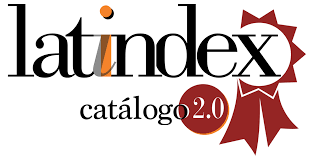Facebook como herramienta de Relaciones Públicas en las empresas: Información de negocios y de RSE en las empresas con mejor reputación a nivel mundial / Facebook as a Public Relations tool in companies: Information of business and the CSR in the world´s
DOI:
https://doi.org/10.5783/revrrpp.v7i14.478Keywords:
Relaciones Públicas, estrategia, redes sociales, Facebook, Internet, RSEAbstract
Este artículo tiene como objetivo conocer los principales contenidos que difunden las empresas en Facebook, y los recursos de información que utilizan para ello. Los resultados de la investigación indican que la presencia de las empresas en Facebook está orientada a la difusión de contenidos de negocios, y muy pocas veces aprovechan la red social para promover la RSE, con poca interacción. Así, el uso de Facebook en las empresas se caracteriza por la difusión de información comercial, y no tanto de la Responsabilidad Social Empresaria (RSE), aplicando recursos poco interactivos. Por lo tanto, es necesario que las empresas revisen sus estrategias de comunicación y Relaciones Públicas en esta red social e integren todos los aspectos organizacionales, fomentando el diálogo y estimulando a los usuarios a involucrarse en las conversaciones.
Downloads
References
Avidar, R., Ariel, Y., Malka, V., & Levy, E. C. (2013). Smartphones and young publics: A new challenge for public relations practice and relationship building. Public Relations Review, 39(5), 603-605. http://doi.org/10.1016/j.pubrev.2013.09.010
Barnes, N. G., Lescault, A. M., & Andonian, J. (2012). Social Media Surge by the 2012 Fortune 500: Increase Use of Blogs , Facebook , Twitter and More, 1-9.
Baruah, T. D. (2012). Effectiveness of Social Media as a tool of communication and its potential for technology enabled connections: A micro-level study. International Journal of Scientific and Research Publications, 2(1), 1-10. http://doi.org/ISSN 2250-3153
Bortree, D. S., & Seltzer, T. (2009). Dialogic strategies and outcomes: An analysis of environmental advocacy groups’ Facebook profiles. Special Section on China Public Relations, 35(3), 317-319. http://doi.org/10.1016/j.pubrev.2009.05.002
Capriotti, P. (2011). Communicating corporate responsibility through the Internet and Social Media. En Ø. Ihlen, J. L. Bartlett, & S. May (Eds.), The Handbook of Communication and Corporate Social Responsibility (358-378). Boston: Wiley-Blackwell. http://doi.org/10.1002/9781118083246
Capriotti, P., Carretón, C., & Castillo, A. (2016). Testing the level of interactivity of institutional websites: From museums 1.0 to museums 2.0. International Journal of Information Management, 36(1), 97-104. http://doi.org/10.1016/j.ijinfomgt.2015.10.003
Capriotti, P., & Moreno, Á. (2007). Corporate citizenship and public relations: The importance and interactivity of social responsibility issues on corporate websites. Public Relations Review, 33(1), 84-91. http://doi.org/10.1016/j.pubrev.2006.11.012
Carim, L., & Warwick, C. (2013). Public Relations Review Use of social media for corporate communications by research-funding organisations in the UK. Public Relations Review, 39(5), 521-525. http://doi.org/10.1016/j.pubrev.2013.08.006
Chaudhri, V., & Jian Wang. (2007). Communicating Corporate Social Responsibility on the Internet: A Case Study of the Top 100 Information Technology Companies in India. Management Communication Quarterly, 21(2), 232-247. http://doi.org/10.1177/0893318907308746
Cho, M., Furey, L., & Mohr, T. (2016). Communicating Corporate Social Responsibility on Social Media : Strategies , Stakeholders , and Public Engagement on Corporate Facebook. Business and Professional Communication Quarterly, 1-18. http://doi.org/10.1177/2329490616663708
Chu, S. (2011). Viral Advertising in Social Media : Participation in Facebook Groups and Responses Among College-Aged Users. Journal of Interactive Advertising, 12(1), 30-43. http://doi.org/10.1080/15252019.2011.10722189
Claes, F., & Deltell, L. (2013). Museos Sociales. Perfiles Museísticos en Twitter y Facebook 2012-2013. El Profesional de la Informacion, 23(6), 594-602. http://doi.org/10.3145/epi.2014.nov.06
Cortado, F. J., & Chalmeta, R. (2016). Use of social networks as a CSR communication tool. Cogent Business & Management, 3(1), 1187783. http://doi.org/10.1080/23311975.2016.1187783
Devaney, E. (2015). Social Media Benchmarks Report 2015. Recuperado a partir de https://cdn2.hubspot.net/hub/53/file-2415418647-pdf/00-OFFERS-HIDDEN/social-media-benchmarks-2015.pdf?t=1423113374840
DiStaso, M. W. (2013). A Benchmark Analysis of the Strategic Use of Social Media for Fortune’s Most Admired U.S. Companies on Facebook, Twitter and Youtube. Public Relations Journal, 7(1), 1-33.
Distaso, M. W., & McCorkindale, T. (2012). Social Media : Uses and Opportunities in Public Relations. Global Media Journal, 5(2), 75-82.
DiStaso, M. W., McCorkindale, T., & Wright, D. K. (2011). How public relations executives perceive and measure the impact of social media in their organizations. Public Relations Review, 37(3), 325-328. http://doi.org/10.1016/j.pubrev.2011.06.005
Eisenegger, M., & Schranz, M. (2011). Reputation Management and Corporate Social Responsibility. En B. and M. Ihlen (Ed.), The handbook of Communication and Corporate Social Responsibility (129-146). John Wiley & Sons, Inc.
Eyrich, N., Padman, M. L., & Sweetser, K. D. (2008). PR practitioners’ use of social media tools and communication technology. Public Relations Review, 34(4), 412-414. http://doi.org/10.1016/j.pubrev.2008.09.010
Facebook. (2017). Facebook newsroom: Company Info. Recuperado 1 de enero de 2017, a partir de http://newsroom.fb.com/company-info/
Gómez-Vásquez, L. (2013). Me gusta o te sigo : Análisis de la comunicación de prácticas de Responsabilidad Social Corporativa a través de los medios sociales. Correspondencias & Análisis, 3, 89-109. Recuperado a partir de http://www.correspondenciasyanalisis.com/en/pdf/rp/2_me_gusta_sigo.pdf
Guillory, J. E., & Sundar, S. S. (2014). How Does Web Site Interactivity Affect Our Perceptions of an Organization? Journal of Public Relations Research, 26(1), 44-61. http://doi.org/10.1080/1062726X.2013.795866
Haigh, M. M., Brubaker, P., & Whiteside, E. (2013). Facebook: examining the information presented and its impact on stakeholders. Corporate Communications: An International Journal, 18(1), 52-69. http://doi.org/10.1108/13563281311294128
IAB Spain Research. (2010). Libro blanco de la comunicación en medios sociales. Revista de Comunicación Interactiva (Vol. 8). Madrid. Recuperado a partir de http://www.iabspain.net/wp-content/uploads/downloads/2012/02/8_LB_Comunicacion_Medios_Sociales.pdf
Iniesta, C. R. (2012). El uso de las herramientas digitales por parte de los bancos . El caso de la imagen en Internet de Banco Santander y BBVA en época de crisis. Revista Internacional de Relaciones Públicas, II, 51-72.
Invodo. (2016). Video Statistics. The Marketer’s Summary 2016. Recuperado a partir de http://www.invodo.com/thank-you/thank-you-2016-video-statistics/
Isenmann, R. (2006). «CSR online: internet based communication». Management models for corporate social responsibility, 247-256.
Jo, S., & Kim, Y. (2003). The Effect of Web Characteristics on Relationship Building. Journal of Public Relations Research, 15(3), 199-223. http://doi.org/10.1207/S1532754XJPRR1503_1
Kent, M. L. (2013). Using social media dialogically: Public relations role in reviving democracy. Public Relations Review, 39(4), 337-345. http://doi.org/10.1016/j.pubrev.2013.07.024
Ki, E.-J., & Nekmat, E. (2014). Situational crisis communication and interactivity: Usage and effectiveness of Facebook for crisis management by Fortune 500 companies. Computers in Human Behavior, 35, 140-147. http://doi.org/10.1016/j.chb.2014.02.039
Kilgour, M., Sasser, S. L., & Larke, R. (2015). The social media transformation process: curating content into strategy. Corporate Communications: An International Journal, 20(3), 326-343. http://doi.org/10.1108/CCIJ-07-2014-0046
Linke, A., & Zerfass, A. (2012). Future trends in social media use for strategic organisation communication : Results of a Delphi study. Public Communication Review, 2(2), 17-29. Recuperado a partir de https://epress.lib.uts.edu.au/journals/index.php/pcr/article/viewFile/2736/3026
Losada-Díaz, J. C., & Capriotti, P. (2015). La comunicación de los museos de arte en Facebook: comparación entre las principales instituciones internacionales y españolas. Palabra Clave - Revista de Comunicación, 18(3), 889-904. http://doi.org/10.5294/pacla.2015.18.3.11
Luarn, P., Lin, Y.-F., & Chiu, Y.-P. (2015). Influence of Facebook brand-page posts on online engagement. Online Information Review, 39(4), 505-519.
Macnamara, J. (2016). Organizational listening: Addressing a major gap in public relations theory and practice. Journal of Public Relations Research, 28(3/4), 146-169. http://doi.org/10.1080/1062726X.2016.1228064
McCorkindale, T. (2010). Can you see the writing on my wall? A content analysis of the Fortune 50’s Facebook social networking sites. Public Relations Journal, 4(3), 1-14. http://doi.org/10.1017/CBO9781107415324.004
Neill, M. S., & Moody, M. (2015). Who is responsible for what? Examining strategic roles in social media management. Public Relations Review, 41(1), 109-118. http://doi.org/10.1016/j.pubrev.2014.10.014
Oliveira, A., & Capriotti, P. (2014). Internet as a key tool for publics to communicate with organizations. The case of the Spanish energy sector. Catalan Journal of Communication & Cultural Studies, 6(1), 143-151. http://doi.org/10.1386/cjcs.6.1.143_1
Pérez Dasilva, J., Genaut Arratibel, A., Meso Aierdi, K., Mendiguren Galdospín, T., Marauri Castillo, I., Iturregui Mardaras, L., Rivero Santamarina, D. (2013). Companies on Facebook and Twitter . Current situation and communication strategies. Revista Latina de Comunicación Social, 68, 676-695. http://doi.org/10.4185/RLCS-2013-996en
Pletikosa-Cvijikj, I., & Michahelles, F. (2013). Online engagement factors on Facebook brand pages. Social Network Analysis and Mining, 3(4), 843-861. http://doi.org/10.1007/s13278-013-0098-8
Quintly. (2016). Brand Study H1 2016: How do 30 of the biggest brands use Facebook? Recuperado a partir de https://www.quintly.com/blog/2016/10/30-biggest-brands-on-facebook-analyzed-in-depth/
Rodríguez Fernández, Ó. (2012). Facebook. Aplicaciones profesionales y de empresa. Madrid: Anaya Multimedia.
Safko, L., & Brake, D. K. (2009). The Social media bible : tactics, tools, and strategies for business success. Hoboken, N.J. : John Wiley. Recuperado a partir de http://cataleg.urv.cat/record=b1408053~S13*cat
Serrano-Cobos, J. (2016). Tendencias tecnológicas en internet: hacia un cambio de paradigma. El profesional de la información, 25(6), 843-850. http://doi.org/10.3145/epi.2016.nov.01
Shih, C. C. (2009). The Facebook Era: Tapping Online Social Networks to Built Better Products, Reach New Audiences, and Sell More Stuff. USA: Prentice Hall.
Sixto-Garcia, J., Aguado-Dominguez, N., & Riveiro-Castro, R. (2017). Presencia 2.0 de las pymes gallegas: niveles de participación y engagement con los usuarios. Revista Latina de Comunicación Social, 72, 47-68. http://doi.org/http://dx.doi.org/10.4185/RLCS-2017-1153es
Tench, R., Moreno, Á., Navarro, C., & Zerfass, A. (2015). Does social media usage matter? How communicators perceive and practice digital communications. Public Relations Review, 41, 242-253. http://doi.org/http://dx.doi.org/10.1016/j.pubrev.2014.12.006
Wang, Y. (2015). Incorporating Social Media in Public Relations : A Synthesis of Social Media-Related Public Relations Research. Public Relations Journal, 9(2007), 1-14.
Waters, R. D., Burnett, E., Lamm, A., & Lucas, J. (2009). Engaging stakeholders through social networking: How nonprofit organizations are using Facebook. Public Relations Review, 35(2), 102-106. http://doi.org/10.1016/j.pubrev.2009.01.006
Downloads
Additional Files
Published
How to Cite
Issue
Section
License
Authors publishing in this journal agree to the following terms:
a. Authors retain copyright and grant the journal the right to be the first publication of the work as licensed under a Creative Commons Attribution License that allows others to share the work with an acknowledgement of authorship of the work and initial publication in this journal.
b. Authors may separately enter into additional arrangements for non-exclusive distribution of the version of the work published in the journal (e.g., placing it in an institutional repository or publishing it in a book), with an acknowledgement of initial publication in this journal.
c. Authors are allowed and encouraged to disseminate their work electronically (e.g. in institutional repositories or on their own website) before and during the submission process, as it can lead to productive exchanges, as well as earlier and higher citation of published work (see The Effect of Open Access).




